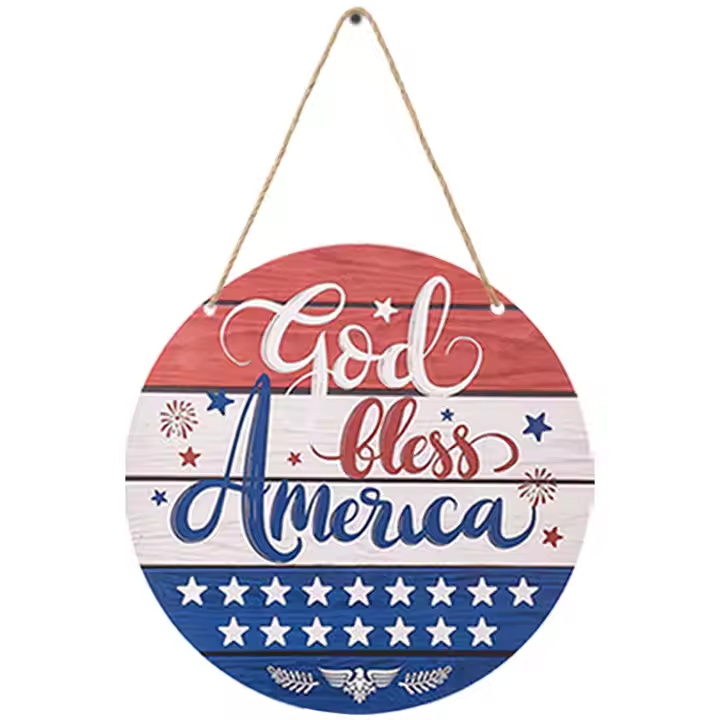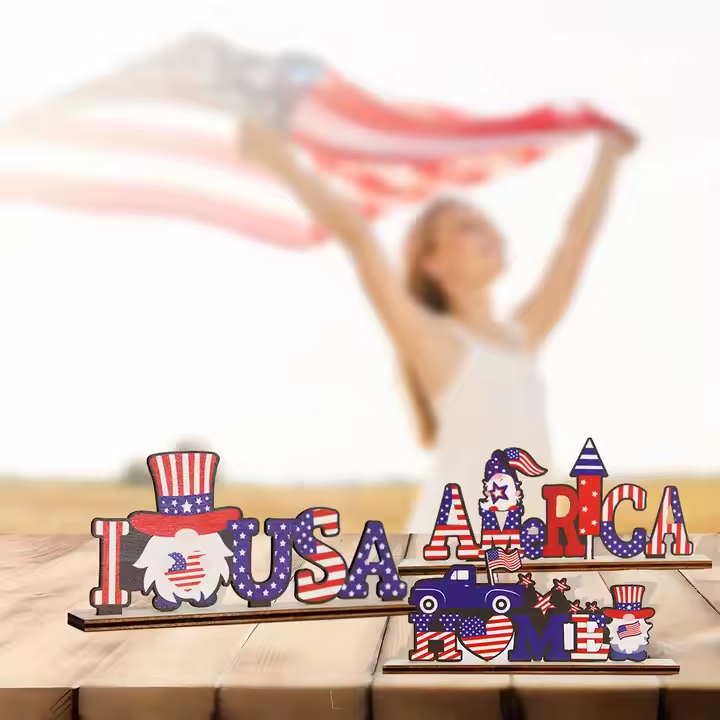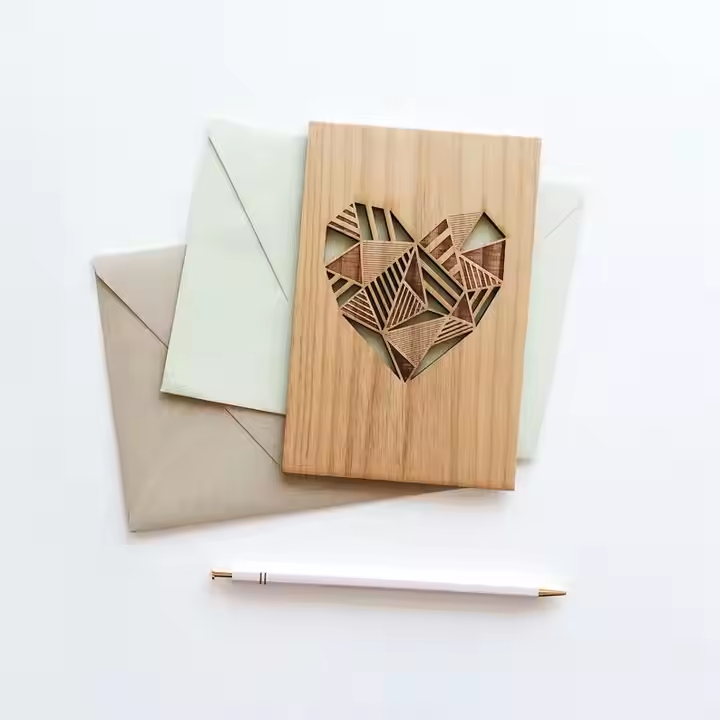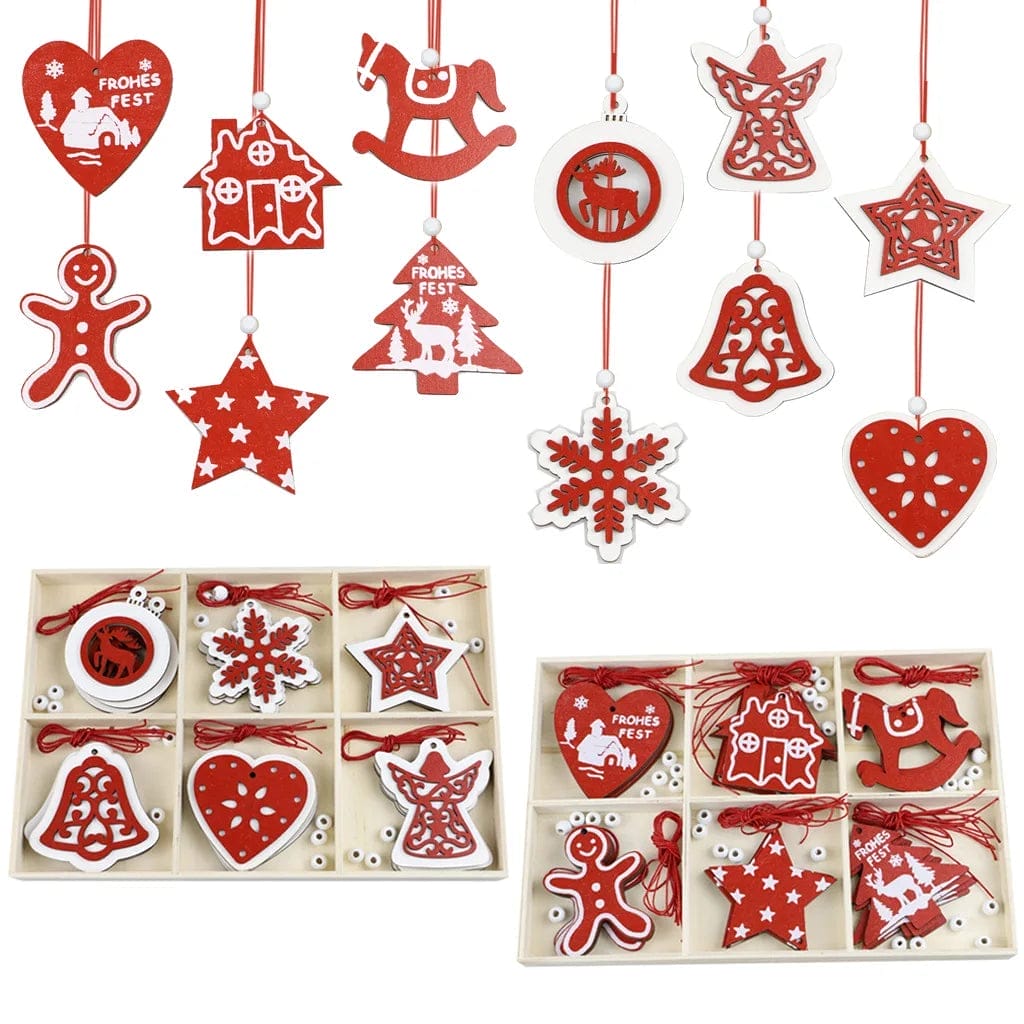If you’re planning to order laser-engraved products, your choice of wood will make or break your project’s success. Different wood species react uniquely to laser energy, affecting everything from burn depth to detail clarity.
Popular options like Basswood might seem like the obvious choice. But there’s much more to take into account beyond the basics. Let’s explore how various wood for laser engraving influence your results and which materials will best suit your specific needs.
Key Takeaways
- Basswood is ideal for beginners due to its soft nature, affordable price, and ability to produce clean cuts and precise engravings.
- Cherry wood offers elegant results with warm tones and fine grain. It creates crisp details that darken beautifully over time.
- The optimal moisture content for laser engraving results is between 6% and 8%, which also helps prevent warping during the process.
- Light-colored woods like Maple and Birch provide excellent contrast for dark engravings. They deliver smooth, detailed results.
- Woods with low resin content, like Alder and Basswood, produce cleaner cuts and better engraving quality with minimal smoke.
Common Types of Wood for Laser Engraving
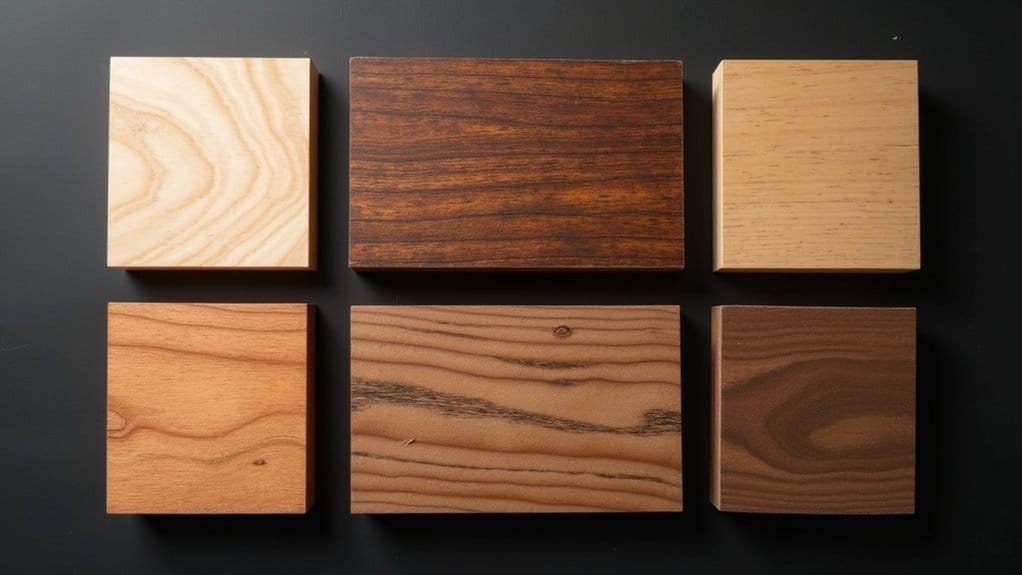
When you’re choosing wood for laser engraving, softer species like Basswood and Birch offer excellent results.
Light-colored options, such as Maple and Cherry, create a striking contrast with the dark engraved marks.
For more sophisticated projects, Walnut provides rich aesthetics and supports detailed engraving.
Basswood
Basswood is a favorite among laser engravers. It stands out as an exceptional choice for both beginners and seasoned craftsmen.
This wood is particularly appealing for laser engraving projects. This is due to its soft nature, which allows for clean cuts and precise engravings without burning. Its light color creates a striking contrast, making your designs pop with clarity and detail.
You’ll also appreciate Basswood’s knot-free surface and various thickness options, including 1/8 inch.
The combination of affordability, high quality, and project-ready characteristics makes it an ideal material for your laser cutter projects.
Birch
Like its popular counterpart, Basswood, Birch has earned its place as a top choice for laser-engraving projects.
Baltic Birch is particularly appealing for your laser engraver. This is thanks to its consistent quality and fine wood grain structure that produces pristine cuts and engravings.
When you’re cutting and engraving on wood, Baltic Birch’s hardness prevents splintering while delivering smooth finishes. The wood properties make it perfect for detailed work. Its light color creates striking contrasting colors with dark engravings.
You can find this laser engraving wood in various thicknesses, with common sizes like 1/8″x12″x20″ available in both individual sheets and bulk packs.
Maple
Hard Maple is famous for its dense structure and fine grain. It stands out as a premium choice for laser engraving woodworking projects that demand precision.
This hardwood’s light color creates a striking contrast with dark engraving marks. It’ll make your designs highly visible.
As one of the best woods for laser engraving, Maple’s subtle grain pattern allows for exceptionally smooth and detailed results.
You can source it in various thicknesses, ranging from 1/16 to 1/4 inch. This makes it ideal for a wide range of laser cutting applications.
Whether you’re creating decorative pieces or functional items, Maple’s durability and superior engraving quality make it an excellent investment for your projects.
Cherry
Cherry wood’s natural elegance makes it a sought-after choice for wood laser engraving projects.
You’ll appreciate its fine grain and smooth wood surface. It delivers exceptional engraving results with crisp, detailed designs. As a hardwood, cherry provides clean cuts and precise engraving marks that contrast beautifully against its warm, reddish-brown tones.
When selecting cherry wood for a laser engraving machine, opt for high-quality wood pieces that are free from knots and have been properly sanded to ensure a smooth finish.
Keep in mind that cherry softens and darkens with age. This will develop a rich patina that enhances the aesthetic appeal of your engraved work over time.
Walnut
Walnut stands as a premier choice for laser engraving. It offers a naturally dark canvas that creates stunning contrast with engraved designs. This quality wood is particularly suited for high-end cutting boards and decorative pieces. The wood species’ fine, straight grain guarantees precise detailing during the engraving process.
| Properties | Benefits |
|---|---|
| Dark Color | High Contrast |
| Fine Grain | Sharp Detail |
| Smooth Texture | Clean Cuts |
| Durable | Long-lasting |
Unlike lighter woods, walnut’s natural darker wood characteristics make your engraved patterns stand out brilliantly. You can find it in various thicknesses. So you can tackle projects from delicate jewelry boxes to substantial wall art.
Key Factors to Consider When Choosing Wood for Laser Engraving

When selecting wood for your laser engraving project, you’ll need to evaluate several critical characteristics.
Density and Hardness
Understanding wood density and hardness is essential for successful laser engraving projects.
Softer woods, such as Alder and Basswood, absorb laser energy more effectively, resulting in better engraving quality. The Janka hardness test helps determine a wood’s resistance to wear. It directly impacts how easily you can engrave it.
While harder woods, such as walnut and Hard Maple, can produce sharper details, they require more powerful lasers.
For ideal engraving results, look for woods with fine grain patterns and lower density. They’ll create stronger contrast in your designs. These characteristics make lightweight woods particularly suitable for detailed engraving work.
Resin and Oil Content
The resin and oil content directly impacts the success of your projects. High resin levels can create excessive smoke and soot during the cutting process, compromising your engraving quality.
You’ll achieve better results with softwoods that have lower resin content. Because they produce cleaner cuts and more detailed engravings. Alder and Basswood are excellent choices due to their minimal oil and resin levels, resulting in superior contrast and finish.
Avoid woods like Mahogany with high oil content. They can cause uneven laser absorption and reduced detail. Before starting your project, test different wood species to determine their resin levels.
Grain Pattern
Grain pattern also plays a major role in laser engraving success. Focus on woods with fine, uniform grain patterns for best results. Softer woods like Alder and Basswood provide cleaner engraving results due to their less pronounced grain structure.
Wood density affects how your laser engraves the material. While denser woods can deliver crisp finishing details, they require more powerful laser settings to achieve this.
For consistency in engraving, avoid pieces with irregular patterns or knots, as these imperfections can disrupt the process. Choose project-ready wood that’s guaranteed flat and knot-free to guarantee even etching across your design.
Moisture Content
Maintaining the proper moisture content is a critical factor in successful laser engraving. You’ll want to verify that your wood has a moisture content between 6% to 8% for ideal results.
A high moisture content can cause warping and poor engraving quality, compromising the outcome of your project.
When working with softwoods, you must be especially vigilant about moisture levels. These materials readily absorb moisture from the environment.
How Wood Type Affects Laser Engraving Quality?

Lighter-colored species like Alder and Basswood create the strongest contrast against dark burn marks. They make your designs stand out dramatically.
You’ll achieve the sharpest detail by choosing softwoods with less dense grain patterns. They respond more predictably to laser settings and produce cleaner edges.
Contrast and Detail
Laser engraving relies heavily on contrast for visual impact. So, selecting the right wood type is essential for achieving high-quality results.
Light-colored woods like Alder and Basswood create a striking contrast with dark engraving marks. They can make your designs more visible and appealing.
The softer grain of these woods also allows for cleaner cuts and smoother engravings. This will reduce wear on a laser machine.
While harder woods might seem durable, their dense grain can limit detail precision and affect laser energy absorption.
To achieve optimal results, carefully adjust the laser’s speed and power settings based on the type of wood being used.
Burn Marks and Discoloration
Different wood species react uniquely to laser engraving, particularly in terms of burn marks and discoloration.
Softer woods produce fewer burn marks due to their less dense grain structure. This makes them ideal for cleaner results.
If you’re aiming for peak engraving quality, choose lighter woods like Alder or Basswood. They provide better contrast with dark engraving marks.
Be aware that woods with high oil content, such as Cherry and Walnut, are more prone to discoloration.
Customization and Large-Scale Production at Qlycheecrafts

Our success in large-scale laser engraving projects depends on maintaining consistent wood quality across batches through rigorous quality-control measures.
We perform standardized checks on wood thickness, moisture content, and grain patterns. We can ensure that each piece meets our clients’ exact specifications.
Our custom ordering options for specific wood types and sizes let us match production requirements while keeping costs manageable through bulk purchasing.
Batch Consistency
When producing laser-engraved wood products in large quantities, maintaining batch consistency is crucial for achieving professional results.
We use the same wood species and thickness throughout production to guarantee uniform quality and appearance.
We choose project-ready wood that is flat and knot-free to ensure accuracy in large-scale runs.
Softwoods like alder and basswood are ideal for laser cutting. Because their consistent grain produces minimal variation.
We offer custom sizes to match specific requirements and reduce waste. We perform regular quality checks to monitor engraving depth and maintain consistency across the entire batch.
Quality Control Measures
Our professional laser engraving operations rely on robust quality control measures to deliver exceptional results.
Each wood product undergoes rigorous inspection to ensure it is flat and knot-free, maximizing engraving quality. When projects require custom sizes, we provide them to maintain consistent material quality across large-scale production runs.
Regular inventory checks and strict quality standards ensure you receive project-ready materials every time.
Your satisfaction is our commitment, reflecting our dedication to delivering premium wood products for laser engraving.
Meeting Client Specifications
Our custom wood solutions empower us to achieve precise specifications for any laser engraving project. When selecting the right wood for a project, we offer a variety of species, including alder, basswood, walnut, and cherry, for customization.
For optimal results in laser engraving projects, we offer custom sizes that precisely match your requirements.
We recommend checking availability for bulk orders, as stock levels can fluctuate. We deliver project-ready, flat, knot-free wood that meets professional standards for precise engraving results.
Conclusion
Selecting the right wood for laser engraving projects makes all the difference in the final result. Whether we use basswood or create premium pieces with walnut, we carefully consider each wood’s characteristics.
Grain pattern, moisture content, and wood density all impact engraving quality. With proper wood selection, we achieve the professional results we aim for.
We offer a wide variety of wooden crafts, available for wholesale and customization. Contact us for more information.
FAQs
What Kind of Wood Is Best for Laser Engraving?
You’ll get the best laser engraving results with softwoods like Alder and Basswood. They’re light-colored and provide excellent contrast. Their softer grain allows for cleaner, more detailed cuts during the engraving process.
What Wood Is Easiest to Laser Cut?
Softwoods like Alder and Basswood are the easiest to laser cut. They have a fine grain and lower density, making them perfect for your projects. Baltic Birch plywood is another excellent choice.
Is MDF Better Than Plywood for Laser Engraving?
For laser engraving, MDF’s smooth, consistent surface gives cleaner results than plywood. However, you’re trading durability for precision, as MDF’s less sturdy and creates more dust during the process.
Can You Laser Engrave Any Wood?
You can’t effectively engrave all wood types. You’ll achieve better results with softer woods, such as Alder and Basswood. Hard woods can damage your laser equipment and won’t produce clean engravings.























